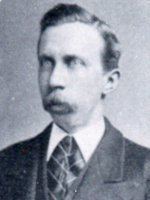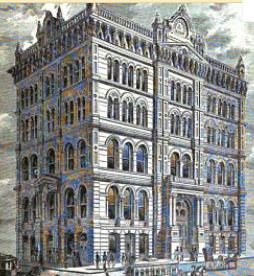Name Ephraim Baldwin | Role Architect | |
 | ||
Structures Gaithersburg, Cathedral of St John the Baptist, Rockville Railroad Station, Point of Rocks, Laurel | ||
Ephraim Francis Baldwin (October 4, 1837 – January 20, 1916) was an American architect, best known for his work for the Baltimore and Ohio Railroad and for the Roman Catholic Church.
Contents
- Personal life
- Professional life
- Career highlights
- Railroad structures
- Catholic Church and institutions
- Commercial and Other Buildings
- References

Personal life
Although born in Troy, New York, Baldwin lived most of his life in Baltimore, Maryland. After his father, a civil engineer, died, his mother moved to her hometown of Baltimore, where Baldwin would be educated and raised. He attended Loyola Blakefield from 1850 to 1852. He attended Mount St. Mary's University in Emmitsburg, Maryland briefly, from 1854 to 1855.
Little else is known about Baldwin's personal life. He married Ellen Douglas Jamison in 1873; they had seven sons and two daughters, and his eldest son, Francis J. Baldwin, became an architect and joined his father's firm. He was known as a devout Catholic and was a member of various Catholic societies. In 1870, he was elected a director of the newly organized Maryland Academy of Arts.
Baldwin died at his home in Baltimore in 1916. He is buried in New Cathedral Cemetery in Baltimore.
Professional life
Baldwin developed a love and talent for architecture as a draftsman and apprentice in the offices of Niernsee & Neilson. His first work of any consequence was Mt. Hope Retreat (later the Seton Institute, now demolished) in Baltimore. He left Niernsee & Neilson in 1867 and practiced on his own for two years. In 1869, Baldwin entered into a partnership with Bruce Price, whom he had met as a trainee at Niernsee & Neilson. They are credited with designing 10 East Chase Street, Baltimore, Maryland, in about 1870. The partnership of Baldwin & Price was short-lived: in 1873, Price moved to Wilkes-Barre, Pennsylvania. During the next ten years, Baldwin practiced alone. In 1883, he entered in a long and fruitful partnership with Josias Pennington, who had been a draftsman at Baldwin & Price, and they formed the firm Baldwin & Pennington.
Baldwin and Price were elected to membership in the Baltimore Chapter of the American Institute of Architects (AIA) in December 1870. Baldwin served as a Secretary of the Chapter until his resignation in 1888 over a disagreement between himself and a competitor, George A. Frederick, another well-known local architect and municipal engineer/architect, designer among many projects of the Baltimore City Hall (1867-1875) and several structures at the city's new expansive Druid Hill Park purchased 1860.
Career highlights
Over the course of his fifty-year career, Baldwin designed some 500 churches, banks, office buildings, warehouses, railroad stations, municipal and public buildings, hospitals, schools, clubs, and residences. His work can be found from New York to Ohio, and from Pennsylvania to Georgia, though eighty percent of his work can be found in Maryland. About 150 of those buildings still stand.
Railroad structures
In 1872, Baldwin was appointed the head architect for the Baltimore and Ohio Railroad, a position previously held by John Rudolph Niernsee, his mentor. Over the next 25 years he designed stations and other structures for the railroad, including many of its most famous buildings. Perhaps the best known are the passenger car shop in Baltimore that is now the central roundhouse at the B&O Railroad Museum, the passenger station (1875) at Point of Rocks, Maryland and the B&O Warehouse (1905) at Camden Yards in Baltimore. Other surviving Baldwin stations can be found in:
Several other non-passenger buildings survive including freight stations in Ellicott City, Maryland and Martinsburg, West Virginia
Baldwin's stations are a favorite with photographers because of their picturesque appearance. Built of brick or wood in the Queen Anne Style, the most famous are festooned with decorative gables, spires, and brickwork.
Catholic Church and institutions
The Catholic Church was also a major part of his life and work. Baldwin took a special interest in ecclesiastical work, undoubtedly motivated by his own religious beliefs and dedication. His work on churches, seminaries, schools, and health care facilities spanned his entire career. He was awarded a gold medal, Bene Merenti, by Pope Leo XII for his work on the buildings at The Catholic University of America.
Among his many other churches and Catholic buildings are the following:
